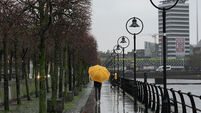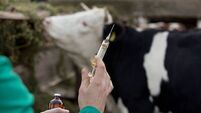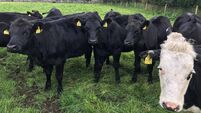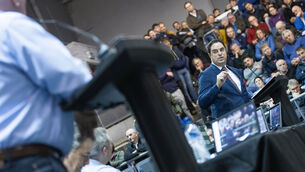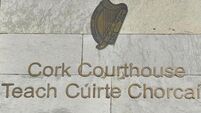Cutting and footing turf is part of rural heritage
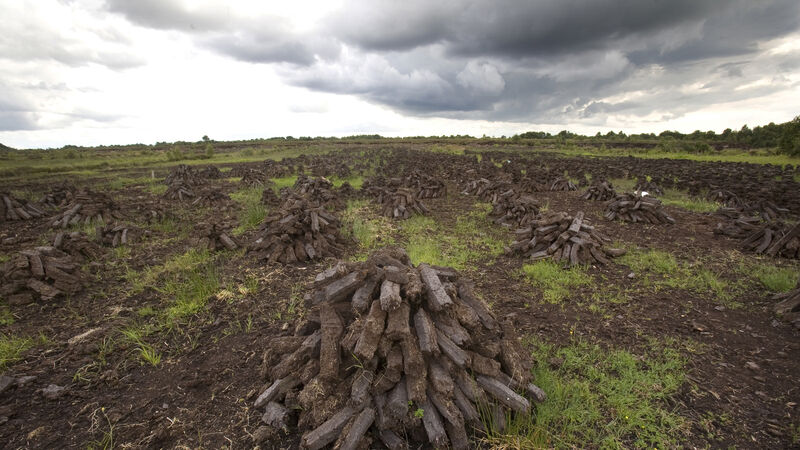
It will no longer be possible to sell turf from retail premises such as shops, petrol stations or fuel depots and selling it online or through any traditional media channels will no longer be permitted. File Picture: Eamonn Farrell/RollingNews.ie
PEOPLE in Sliabh Luachra, straddling the Kerry-Cork border, tell a story about an old man who made the most of a dry week in a wet year during the Second World War to cut his bank of turf.
But he nodded off to sleep from exhaustion during Mass in Scartaglen Church one Sunday morning, only to be awakened by the sound of rain hitting off the roof. "Bogs are finished", he shouted, as the priest ended his sermon and his neighbours tried to keep straight faces.
Con Houlihan, the wordsmith from Castleisland, later used that story in The Kerryman to explain the culture of Scartaglen. One always feels, he wrote, that the people there have a great grasp of what life is all about, as their minds seldom stray from the basic realities - food and fuel.
Years after the “bogs are finished” utterance, that very prospect became a real-life worry for traditional turf cutters, not because of any sudden cloudburst but due to Government moves to restrict the practice.
A fiery campaign followed to allow those who traditionally cut, share and sell turf to continue doing what their previous generations had done. Rural groups, politicians and others joined in the effort.
The environment lobby strongly argued, however, that bogs must be protected because they are unique habitats for rare species, play important roles in storing carbon and regulate flood water run-off.
Taoiseach Micheal Martin, Tanaiste Leo Varadkar and Green Party leader Eamon Ryan recently discussed the controversy, which became known as “The Battle of the Bogs.” A full Cabinet later agreed a set of new draft regulations which are scheduled to apply from October 31.
People with turbary rights and all other customary practices will still be able to cut turf for their own use and retain the ability to gift or sell it.
But it will no longer be possible to sell turf from retail premises such as shops, petrol stations or fuel depots and selling it online or through any traditional media channels will no longer be permitted.
The measures aim to strike a sensible balance between protecting public health and allowing people continued access to traditional forms of fuel for heating their homes.
Cutting and footing turf is part of rural heritage. The trek to the bogs would begin in earnest as a stretch came into the spring evenings and the danger of hard frost had gone.
Men on bicycles with a bag on the handlebars, a sleán (spade) tied to the crossbar and a box on the carrier would soon be seen moving along the old bog roads. The practice nurtured good fellowship as neighbours gave a day footing turf during May in return for one piking hay in July.
It involved entire families as the women at home prepared the dinner and sent it to the bog with children on bicycles or on foot. But a bag filled with sandwiches and slices of homemade bread was never complete without a few pint bottles of stout.
It also contained at least one whiskey bottle filled with hot tea and placed in a man's sock to keep it warm.
Turf cutters, who relished those refreshments in the perfumed bog air, were always close to nature, although they might have been tempted at times to express their annoyance at the evening midges or a morning rain shower. But they generally enjoyed the peace of a summer's day in the bog, especially if they worked on their own.
The silence was only broken by a church bell ringing in the distance, the sound of a car or a barking dog helping a farmer to bring the cows in from the fields for milking. But there were tantalising moments too, like waiting for a kettle to sing on a Primus burner to make a mug of tea to quench the thirst.
Yet, turf cutters always had time to talk about cattle prices, the weather, football and hurling games, racing greyhounds and the price of the pint. And there were stories too about chunks of butter being dug up centuries after being buried in the bogs, where the cool environment made them ideal for preserving food.
But with the arrival of modern methods, people were no longer prepared to spend hours cutting the same amount of turf with a sleán that a machine could produce in 10 minutes.
Traditional turf-cutting began to give way to new technology, faster productivity, sausage-like sods and, more recently, a growing concern about the impact of solid fuels on the environment.
Over 30 years ago, Kerry songwriter Sean McCarthy recalled his own memories of turf-cutting in long gone times: “The crack, the stories, and the rib-tickling lies are no more. Progress has come to the bog.”
CLIMATE & SUSTAINABILITY HUB

